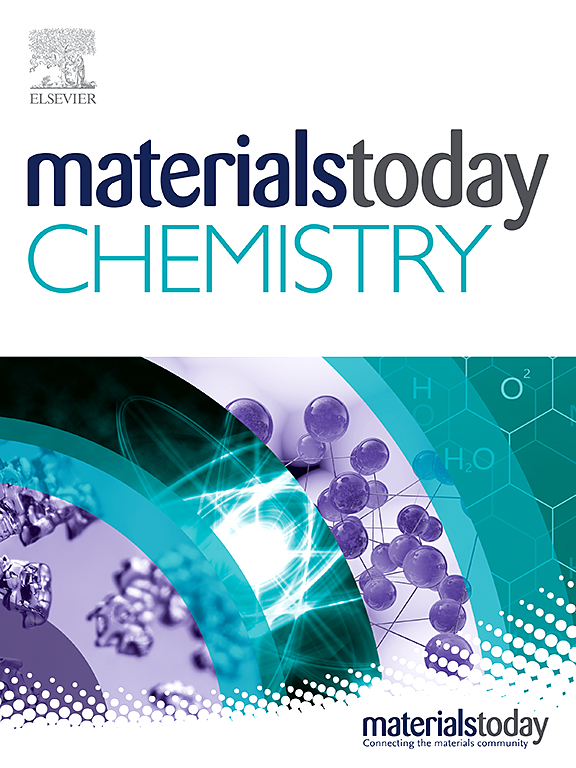制作和分析通过置换反应增强抗菌金属微粒的非织造布及各种机理
IF 6.7
2区 化学
Q1 CHEMISTRY, MULTIDISCIPLINARY
引用次数: 0
摘要
细菌感染严重影响人类健康。将无毒、高效、柔韧的抗菌微粒负载到非织造材料上是一种很有前景的解决方案。金属抗菌微粒已得到广泛关注和应用,但银和铜等常见材料具有潜在毒性,而且通常采用单一的抗菌机制。这种局限性会降低它们在使用周期内的有效性。在我们的研究中,镓(Ga)因其活性和多种抗菌机制而闻名,我们将其与亚铁离子(Fe)结合使用,后者具有广谱抗菌特性,与银和铜相比,潜在毒性更低。通过自发置换反应。镓和铁可以生成镓铁合金和各种抗菌颗粒。在本研究中,我们通过简单的浸泡和表面处理工艺,在抗菌无纺布中添加了多种金属抗菌颗粒,从而开发出了抗菌无纺布。这些多种颗粒引入的多重抗菌机制使非织造布材料具有卓越的抗菌性能,对和的抗菌效果高达 99.99%。通过理论计算、X 射线光电子能谱(XPS)表征和实验观察,彻底验证了镓和铁之间替代反应的可行性。这项研究为推进和探索抗菌非织造材料提供了宝贵的见解。本文章由计算机程序翻译,如有差异,请以英文原文为准。
Crafting and analyzing nonwovens enhanced with antimicrobial metal particles and diverse mechanisms via substitution reaction
Bacterial infections result in serious impacts on human health. Non-toxic, potent, and flexible antimicrobial particles loaded onto nonwoven materials offer a promising solution. Metallic antimicrobial particles have achieved significant attention and application; however, common materials such as silver and copper exhibit potential toxicity and typically employ a singular antimicrobial mechanism. This limitation can diminish their effectiveness over the service cycle. In our research gallium (Ga), known for its activity and versatile antimicrobial mechanisms, was employed with ferrous ions (Fe), which offer broad-spectrum antimicrobial properties and lower potential toxicity compared to silver and copper. Through spontaneous substitution reaction. Ga and Fe can generate Ga–Fe alloys and various antimicrobial particles. In this study, we developed antimicrobial nonwovens by loading them with multiple types of metal antimicrobial particles through a simple soaking and surface treatment process. The multifaceted antimicrobial mechanisms introduced by these multiple particles provide the nonwoven materials with exceptional antimicrobial performance, achieving an effectiveness of up to 99.99 % against and . The feasibility of the substitution reaction between Ga and Fe was thoroughly verified through theoretical calculations, X-ray photoelectron spectroscopy (XPS) characterization, and experimental observations. This research offers valuable insights for advancing and exploring antimicrobial nonwoven materials.
求助全文
通过发布文献求助,成功后即可免费获取论文全文。
去求助
来源期刊

Materials Today Chemistry
Multiple-
CiteScore
8.90
自引率
6.80%
发文量
596
审稿时长
33 days
期刊介绍:
Materials Today Chemistry is a multi-disciplinary journal dedicated to all facets of materials chemistry.
This field represents one of the fastest-growing areas of science, involving the application of chemistry-based techniques to the study of materials. It encompasses materials synthesis and behavior, as well as the intricate relationships between material structure and properties at the atomic and molecular scale. Materials Today Chemistry serves as a high-impact platform for discussing research that propels the field forward through groundbreaking discoveries and innovative techniques.
 求助内容:
求助内容: 应助结果提醒方式:
应助结果提醒方式:


